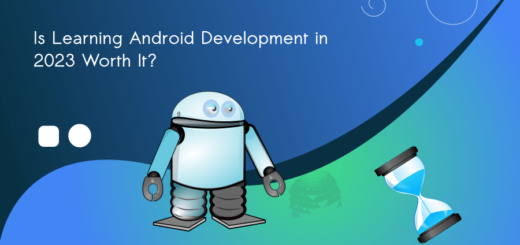Kotlin Multiplatform vs Flutter : Making the Cross-Platform Choice
In today’s rapidly evolving digital landscape, mobile app development has become a vital element for businesses and startups seeking effective engagement with their target audiences. The choice of the right technology stack for your mobile app project can profoundly impact its success. Two major contenders in the field of mobile app development are Kotlin Multiplatform and Flutter. In this article, we will thoroughly examine the Kotlin Multiplatform vs Flutter debate to assist you in making an informed decision for your upcoming mobile app project.
Kotlin Multiplatform and Flutter: Crafting a Single App for Multiple Platforms

Understanding Kotlin Multiplatform (KMP)
Kotlin Multiplatform, often abbreviated as KMP, is a modern programming technology developed by JetBrains. Developers can write code that harnesses the power of the Kotlin programming language and share it across multiple platforms, including Android, iOS, and web.
Through the utilization of Kotlin Multiplatform, developers can efficiently compose a significant portion of their codebase once. As a result, they can seamlessly apply it across various platforms, thereby substantially decreasing both development time and effort.
Additionally, Kotlin Multiplatform proves exceptionally enticing for organizations and developers who have previously invested in Kotlin for their Android app development endeavors.
This facilitates a seamless transition to cross-platform development without the requirement of mastering an entirely new language or framework, thus significantly streamlining the development process.
Where Flutter stands?
Flutter, an open-source UI software development toolkit created by Google, enables developers to build natively compiled applications for mobile, web, and desktop from a single codebase.
This platform is renowned for its rapid development cycle and expressive UI components, making it a favored option for developing visually appealing, high-performance apps.
Flutter’s widget-based architecture facilitates the straightforward creation of custom UI components and offers a comprehensive set of pre-designed widgets that can be tailored to match the app’s design needs.
Programming Languages : Kotlin Multiplatform vs Flutter
Kotlin Multiplatform primarily relies on the Kotlin programming language, as the name suggests. Kotlin, a statically typed and modern language, operates on the Java Virtual Machine (JVM). Developers who have experience with Kotlin for Android development will easily transition to Kotlin Multiplatform.
On the other hand, Flutter employs Dart as its programming language. Google developed Dart, and it is less popular than Kotlin. Developers proficient in Dart will naturally lean towards Flutter, but individuals with expertise in other languages may require some time to adjust.

Performance
When it comes to performance, Kotlin Multiplatform holds a clear advantage. It allows developers to write platform-specific code, optimizing performance for each platform. In contrast, Flutter relies on a single codebase compiled to native code, which can lead to potential performance bottlenecks.
Development Speed
Flutter, with its ‘hot reload’ feature, offers rapid development and debugging capabilities. We can add new functionalities quickly with the help of different widgets.
Developers can instantly see changes in the app as they code, enhancing productivity. On the other hand, Kotlin Multiplatform can be slower due to the need to write platform-specific code for certain functionalities.
UI and Design
Flutter shines in terms of UI and design. Its rich set of pre-built widgets and a flexible UI framework make it easy to create visually appealing and consistent user interfaces across platforms.
Kotlin Multiplatform, while capable of creating beautiful UIs, may require more effort to achieve the same level of visual consistency.
Development Team
Consider your development team’s expertise when making a choice. If your team is more comfortable with Kotlin, Kotlin Multiplatform might be the better choice. Similarly, if your team has experience in Dart (the language used by Flutter), Flutter could be a more natural fit.
Kotlin Multiplatform vs Flutter : Maintenance and Future-Proofing
When choosing a framework, think about long-term maintenance. Flutter’s single codebase may lead to easier maintenance, but it could also be riskier if Google shifts its priorities. Kotlin Multiplatform’s reliance on Kotlin, a language with broader use cases, may offer better long-term stability.
A Case Study : Choosing between KMP and Flutter for cross-platform app development
Our client, BIGKNOL App Dev Inc., is a growing e-commerce startup with a vision to expand its customer base by launching a mobile application. They want the app to be available on both iOS and Android platforms while maintaining a consistent user experience. Given the limited development resources and a need for speed to market, they approached us, a software development agency, to help them choose between Kotlin Multiplatform and Flutter for their cross-platform app development.
Challenge
The primary challenge for our client was to decide on a cross-platform development framework that would offer a balance between fast development, optimal performance, and a visually appealing user interface. They also wanted to ensure long-term maintainability and the ability to expand to additional platforms in the future.
Analysis and Decision-Making

After analyzing the client’s requirements, we recognized that performance was a critical factor for their e-commerce app. To address this, we evaluated Kotlin Multiplatform and Flutter’s performance capabilities.
Kotlin Multiplatform’s ability to write platform-specific code for performance optimization was appealing, particularly for features that required high efficiency.
Flutter’s single codebase, while providing a rapid development advantage, raised concerns about potential performance bottlenecks.
We also assured the client that, while Flutter was the immediate choice, we would continuously monitor the development landscape and be prepared to pivot if future needs warranted it. This approach provided the client with confidence in their choice while maintaining flexibility for potential platform expansion.
Final Outcome
Our client agreed with our recommendation to use Flutter for their cross-platform app development. This decision led to the successful launch of their e-commerce app on both iOS and Android, meeting their performance, design, and time-to-market goals. The app’s positive reception from users solidified the choice of Flutter as the right framework for this project, showcasing its effectiveness in real-world scenarios.
Verdict
| Aspect | Kotlin Multiplatform (KMP) | Flutter |
|---|---|---|
| Performance | – Allows platform-specific code for optimization | – Single codebase may lead to performance issues |
| Development Speed | – Development may be slower due to platform-specific code | Enables rapid development |
| UI and Design | – Achieves good UI but may require more effort | – Rich set of pre-built widgets for attractive UIs |
| Ecosystem and Libraries | – Growing ecosystem, fewer third-party libraries | – Robust ecosystem with extensive libraries and plugins |
| Development Team | – Ideal if team is comfortable with Kotlin | – Good choice if the team has experience with Dart |
| Platform Support | – Targets mobile, desktop, and server platforms | – Strong support for mobile; web support improving |
| Community and Documentation | – Active community and documentation | – Active community with Google’s support |
| Maintenance and Future-Proofing | – Relies on Kotlin for broader use cases, offering stability | – Single codebase simplicity with potential risk |
In the Kotlin Multiplatform vs Flutter debate, the choice ultimately depends on your project’s specific requirements and your team’s expertise. If you prioritize performance, platform diversity, and are comfortable with Kotlin, Kotlin Multiplatform might be your best bet.
On the other hand, if rapid development, a rich set of UI widgets, and a thriving community are crucial, Flutter could be the ideal choice. Whichever you choose, both frameworks have their strengths and can help you achieve cross-platform success.



